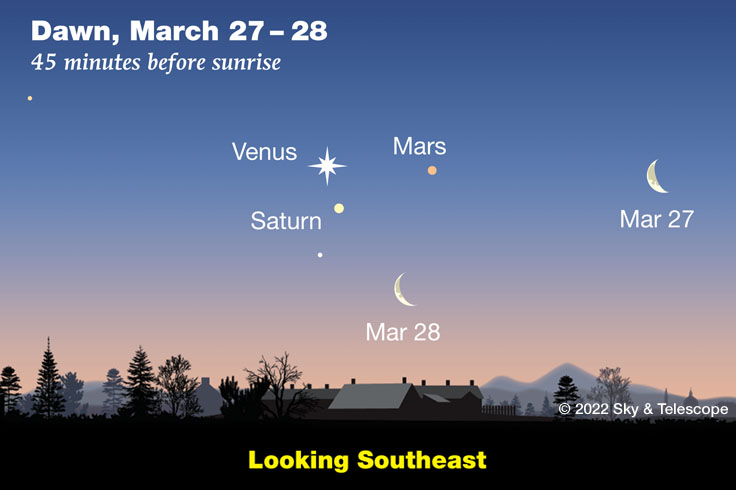Whether you’re just getting started in astronomy or simply looking to do some casual skywatching, our monthly Sky Tour astronomy podcast provides an informative and entertaining 12-minute guided tour of the nighttime sky. Download the March episode to find and learn about Sirius, the brightest star in the night sky.

Listen Here:
Podcast: Play in new window | Download
Subscribe: Apple Podcasts | Google Podcasts | Spotify | Email | RSS | More
March brings one of the year’s two equinoxes, and this one occurs on the 20th at 11:33 a.m. Eastern Time. Maybe you’ve heard this called the vernal or spring equinox, because it signals the beginning of astronomical spring in the Northern Hemisphere. But likewise, it’s the start of autumn in the Southern Hemisphere.
Something is missing in the evening sky right now. There are stars aplenty, but where have all the planets gone? Just a few months ago, you could take an early evening stroll and be dazzled by the views of Venus, Jupiter, and Saturn overhead. But that was then, and now you won’t find single naked-eye planet in the evening sky. So where are they? To find the answer, listen to this month’s Sky Tour podcast.

Sky & Telescope
The night sky’s most dazzling star is Sirius, above the southern horizon as darkness falls. It’s the brightest star in the constellation Canis Major, the Big Dog, and Sirius is known as the Dog Star. How early in twilight can you pick it up? Anytime during the first days of March, before the switch to daylight time, make a note of the horizon point directly below this beacon at 8 p.m. — that’s very nearly due south.
For those living in the southern tier of the U.S. (or at northern latitudes within 35° of the equator), you can use Sirius to lead you to the second-brightest star in the nighttime sky. Want to know which one that is? Want to know how to spot it? Listen to this month’s Sky Tour to find out!
Let your eyes drift leftward, toward the eastern horizon. In the hours after sunset, that’s where you’ll find the constellation Leo, the Lion. Its alpha star, Regulus, sits at the bottom of a backward question mark that stretches toward upper left. That represents the lion’s head and mane, and its hindquarters and tail are marked by a triangle of medium-bright stars to the lower left of Regulus.
At this time of year, you can think of Leo rising up in the east as a harbinger of spring — just like Orion’s climb a few months ago told me winter was coming. Look well to the upper left of Leo by about four fists, and you’ll spot another welcome sight in the early spring sky: the Big Dipper, seemingly balanced on the end of its handle.
There’s much more to see this month in the evening and predawn skies. So download or listen to this month’s Sky Tour podcast — a fun and informative way to learn what stars and planets await you throughout March.
 1
1
Comments
Jeff
March 4, 2022 at 5:44 pm
Let's hope for clear skies on the mornings of 27th and 28th. This will be a fabulous sight. Thanks for the heads-up.
You must be logged in to post a comment.
You must be logged in to post a comment.